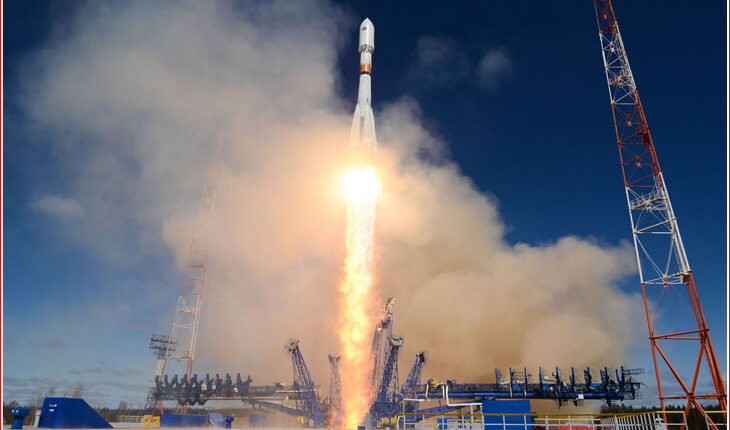©2021 Reporters Post24. All Rights Reserved.
Russia’s Soyuz-2.1b launched from Site 43/4 at Plesetsk Cosmodrome, carrying the sixth satellite of Russia’s next-generation early warning system. Upon reaching orbit, the spacecraft was designated as Kosmos-2563. The Tundra series of satellites, also known as Kupol or Edinaya Kosmicheskaya Sistema (EKS) satellites, is the next generation of Russian early warning satellites, designed to replace the US-K and US-KMO early warning satellites of the Oko-1 system.
The EKS Kupol satellites are part of a developing program of early warning satellites, designed to identify any possible ballistic missile launches and complement early warning radars such as the Voronezh. This early warning network gives advance notice of a potential nuclear attack and would provide information to the defense systems protecting Moscow, as well as any other Russian missile defense and counterattack resources.
Development of the EKS satellites started in 2000, but the Russian Ministry of Defense didn’t award a contract for the program until 2007, with RKK Energiya set to design the satellite bus and a first launch planned for 2009. Several problems, changing requirements, and a court case led to long delays, eventually postponing the first launch to the end of 2014, and the launch would end up occurring on Nov. 11, 2015.
The Soyuz-2.1b is one of three active variants in the Soyuz family of rockets, and looks the most like the early Soyuz rockets, using four liquid-fueled boosters surrounding a central core. This design is also used on the Soyuz-2.1a but is not used on the Soyuz-2.1v, which doesn’t use the four side boosters and instead uses a single core.
The Soyuz launcher was first introduced in 1966, derived from the Vostok rocket, which itself was based on the R-7 intercontinental ballistic missile. While the first four test launches ended in failure, the rocket did eventually successfully reach orbit.
Other variants of the Vostok rocket include the Molniya variant, adding a fourth stage, allowing it to reach the highly elliptical orbit of the same name.

Soyuz-2.1b engine ignition at Site 43/4 for the GLONASS-K-17 mission in October 2022. (Credit: Roscosmos)
Wednesday’s launch also made use of the Fregat upper stage. Plans to redesign the Soyuz rocket with this new stage were introduced in the 1990s, based on the propulsion module of the Phobos interplanetary probes. Despite being endorsed by Roscosmos, the Russian state space agency, and the Russian Ministry of Defense, a lack of funds prevented the plans from being implemented.
The eventual founding of Starsem, a company marketing Soyuz launches internationally, allowed for the creation of a less ambitious rocket, the Soyuz-U/Fregat, also known as Soyuz-Fregat. The Soyuz-U/Fregat consisted of a Fregat upper stage being used on the already existing Soyuz-U launcher, allowing the rocket to carry 1,350 kg to a geostationary transfer orbit (GTO).
Despite previous troubles, the Soyuz launcher was eventually phased out and replaced by a new family of rockets, the Soyuz-2. Using a new digital guidance system, and a modified third stage, now powered by a new engine, the rocket could now lift up to 3,250 kg to the same GTO. The Soyuz-U and Soyuz-FG rockets flew until 2017 and 2019 respectively, with the final flight of Soyuz-FG carrying humans to the ISS on the Soyuz MS-15 mission.
Wednesday’s mission lifted off from Site 43/4 at the Plesetsk Cosmodrome. Plesetsk is one of three cosmodromes currently used by the Russian military as well as Roscosmos, Russia’s state-owned space agency. The other two cosmodromes currently in use are Baikonur Cosmodrome, located in the former Soviet Union-incorporated nation of Kazakhstan, and Vostochny Cosmodrome, located in Russia’s far east.
During the 1960s, the former R-7 pads were repurposed to allow launches of R-7-derived launch vehicles, including the first Soyuz launcher. The first orbital launch from Plesetsk occurred on March 17, 1966, when an R-7-derived Vostok-2 launched Kosmos-112, a first-generation Soviet optical reconnaissance satellite to low Earth orbit (LEO).


